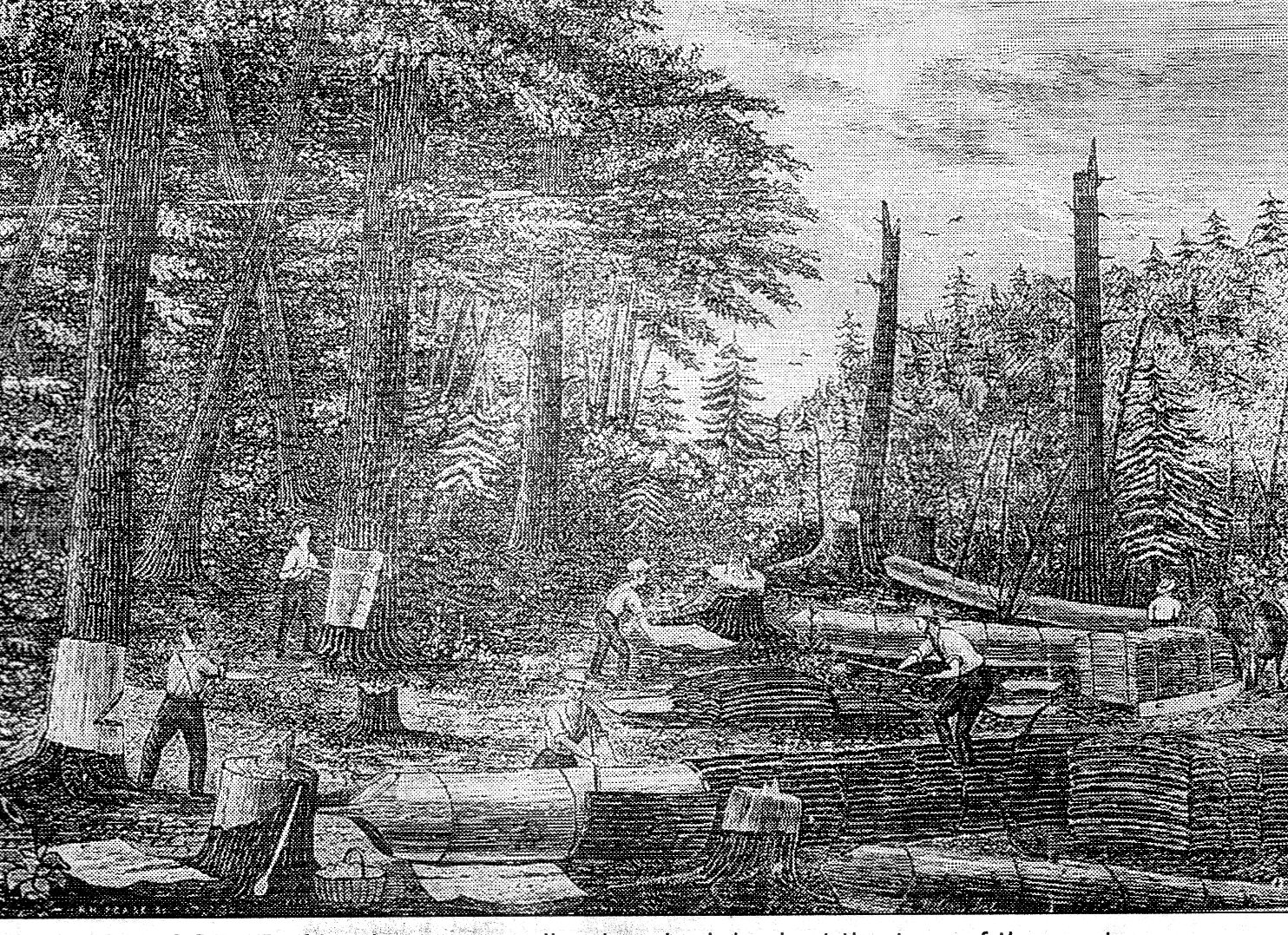
Submitted by Nute Chapman
From Onaway Outlook May 3, 2013

 |
Submitted by Nute Chapman From Onaway Outlook May 3, 2013 |
 |
CAPTION #1: A TYPICAL SCENE of lumbermen peeling hemlock bark at the turn of the century.
 My Dad often talked about the tannery near the end of Sixth Street. He talked about the stench from the
soaking and drying hides being very strong. The whole area had a bad stench. All of the waste drained into
the creek.
My Dad often talked about the tannery near the end of Sixth Street. He talked about the stench from the
soaking and drying hides being very strong. The whole area had a bad stench. All of the waste drained into
the creek.
We do not find any records from the tannery itself, but we know that they used hemlock bark from this area.
It was dried and ground into a powder that was used in the tanning process. Many tanneries were built close
to the railroads to have access to the bark supply that was hauled by trains.
The Lobdell and Emery Company shipped many railcars from Onaway to tanneries on the East Coast.
When they cut the hard maple, they also felled the hemlock trees and striped the bark from them to sell
to the tanneries.
They had a contract with the Fletcher Paper Company of Alpena to buy the hemlock logs once they were peeled.
This brings us to one of several lawsuits against the Detroit & Mackinac Railroad (D & M) and the Railroad
Commission.
One of the court cases I find interesting is between the Fletcher Paper Company and the Railroad Commission.
Space does not let me print it all, but I will high highlight some of it.
The Tubbs branch, sometimes called the Martindale Spur, was built in 1906.
It was used by the Churchill Lumber Co., and the Fletcher Paper Co. By 1909 most of the timber tracts along
the Tubbs Branch had been cut.
On September 10, 1910 one-half mile of the Tubbs Branch was removed because of rotten ties that needed to
be replaced. At this time the Fletcher Paper Co. still had 14,000,000 feet of hemlock logs decked on the
Tubbs Branch.
The railroad wanted the Fletcher Paper Co. to furnish a large number of new ties, to wit 6,000, to replace
the decayed ties, take out the rotten ties and lay new ties and additional ballasting to put the track in shape
for use, an expenditure of $3,000.
The D & M and Fletcher Paper Co. began a court battle that lasted several years, first in the Wayne County
Court and then the Supreme Court of Michigan.
The Fletcher Paper Co. had to put up a $10,000 bond that was filed on January 8, 1914.
In the spring of 1915 the Onaway and Northern Michigan Railroad was extended into the remaining timberlands
in which the Fletcher Paper Co. and the Lobdell & Emery Company had an interest in and the railroad had taken out
over 5,000,000 feet of hemlock logs for the Fletcher Paper Company since the controversy over the Tubbs Branch
began.
We don't know if the 5,000,000 feet of logs was part of the 14,000,000 feet of logs left behind or not.
April 3, 1916 it was noted that the D & M Railroad had not laid the new ties nor had the Fletcher Paper Co.
had its bond returned.
Once again the fact that "Onaway Steered the World" did not come without sacrifices.
-From The Onaway Outlook, May 3, 2013, p. 10.
Retyped by J. Anderson.